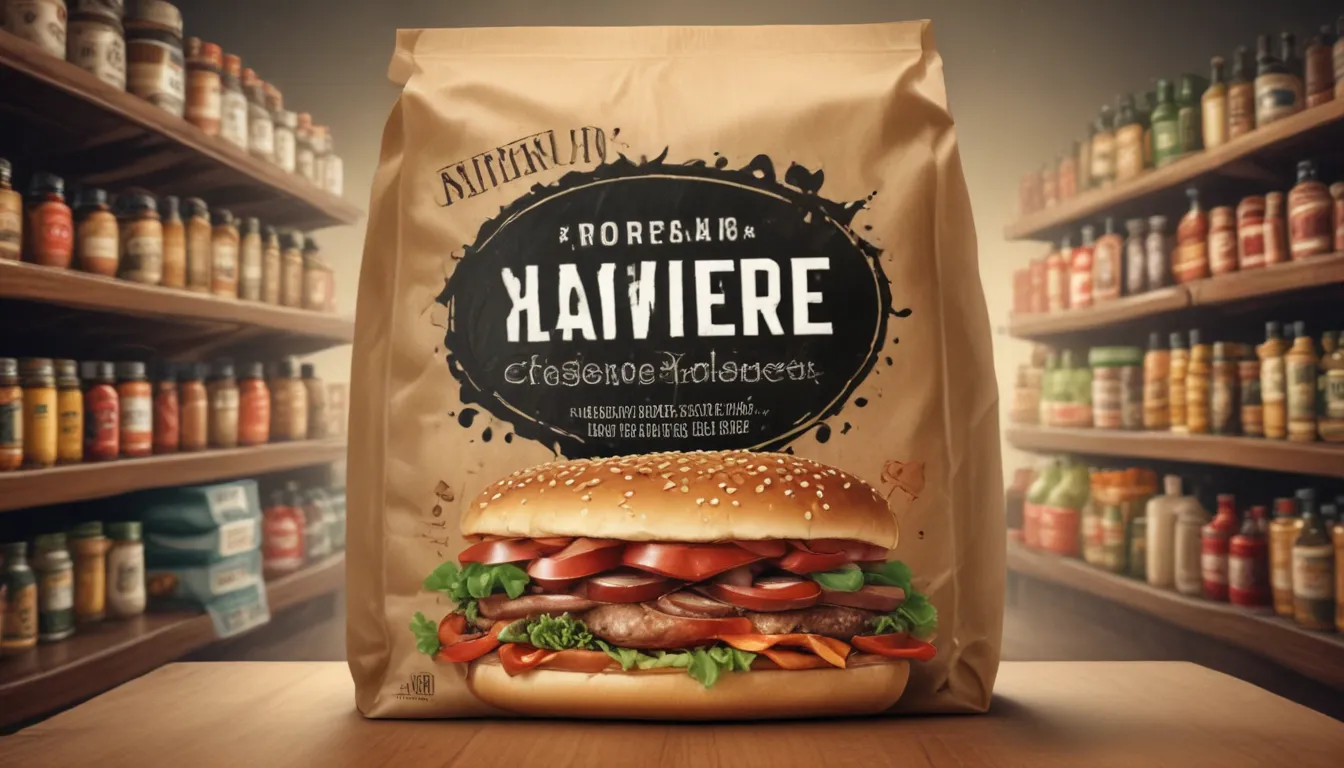A Note About Images: The images used in our articles are for illustration purposes only and may not exactly match the content. They are meant to engage readers, but the text should be relied upon for accurate information.
In a world filled with food choices, deciphering the information packed on food labels can be a daunting task. From serving sizes to nutritional values, food labeling plays a crucial role in helping consumers make informed decisions about their dietary intake. Whether you’re a health enthusiast or just curious about the intricacies of food packaging, delving into the world of food labeling can be both enlightening and empowering.
Unveiling the Basics of Food Labels
Food labels are like a treasure trove of information, offering valuable insights into the products we consume on a daily basis. Key components such as the product name, ingredients list, nutritional information, allergen warnings, and expiration dates ensure that consumers are well-informed about the content and safety of the food they purchase.
Understanding Serving Sizes
Have you ever puzzled over the serving size mentioned on food labels? Serving sizes are calculated based on average consumption patterns to help consumers gauge the nutritional value of a product in relation to their individual dietary needs. It’s essential to recognize that serving sizes may vary from person to person.
Unveiling the Nutrition Facts
The nutrition facts panel on food labels serves as a comprehensive guide to the product’s nutrient content. From calories and fat content to essential vitamins and minerals, this section empowers consumers to make informed choices tailored to their nutritional requirements.
Shedding Light on Allergen Declaration
Food labels are mandated to disclose any potential allergens present in the product, such as peanuts, tree nuts, dairy, eggs, soy, wheat, fish, and shellfish. This critical information is particularly essential for individuals with food allergies or specific dietary restrictions.
Decoding Health Claims and Icons
Spotting claims like “low-fat” or “gluten-free” on food labels? These health claims serve to provide consumers with quick insights into the nutritional benefits or suitability of a product for specific dietary preferences. Whether through descriptive text or eye-catching icons, health claims aim to guide consumers towards healthier choices.
Embracing Additives Disclosure
Ever wondered about the additives lurking in your food? Food labels reveal the presence of additives used in the manufacturing process, serving purposes such as enhancing flavor, preserving freshness, or improving texture. By highlighting additives on labels, consumers can make informed decisions about their food choices.
Revealing the Country of Origin
Food labels in many countries are required to specify the country of origin for certain products. This information holds significance for consumers who prioritize supporting local producers or harbor concerns regarding the quality and safety standards of imported goods.
Embracing Organic Labeling
Organic food labels signify that a product has been cultivated following strict organic farming practices, devoid of synthetic fertilizers, pesticides, or genetically modified organisms (GMOs). Opting for organic products enables consumers to align with environmentally friendly and sustainable practices.
Delving into GMO Labeling
In certain regions, food labels must disclose the presence of genetically modified organisms (GMOs) in a product. This information caters to consumers wary of the potential health and environmental implications of GMO consumption.
Ensuring Label Accuracy and Compliance
Food labeling is subject to stringent regulations to ensure accuracy, consistency, and transparency across products. Regulatory bodies diligently monitor compliance to guarantee that labels furnish factual information and do not mislead consumers.
Harmonizing Labels with Nutritional Guidelines
Food labels often provide references to nutritional guidelines, offering guidance on recommended daily intakes of nutrients. This resource facilitates healthier eating habits and allows for easy comparison between different products.
Catering to Special Diets
Tailored food labels cater to individuals following special dietary needs or preferences, such as gluten-free, lactose-free, or vegan diets. Specific labeling empowers individuals to easily identify products that align with their dietary requirements.
Embracing Technological Advances in Labeling
Advancements in technology have heralded innovative labeling methods such as QR codes and smart labels. These features enable consumers to access additional information about a product, ranging from its source and production methods to sustainability practices.
Conclusion
In conclusion, food labeling plays a pivotal role in consumer awareness and understanding. By unraveling the information presented on food labels, consumers can make informed decisions about the products they consume, fostering a healthy and balanced diet. With a deeper insight into the nuances of food labeling, consumers can navigate the aisles with confidence, selecting products that resonate with their dietary needs and preferences.
FAQs: Unveiling Common Queries
Q: What is the purpose of food labeling?
A: Food labeling aims to furnish consumers with essential information about a product’s ingredients, nutritional value, allergens, and specific claims or certifications.
Q: What should I look for in the nutrition facts on a food label?
A: Pay attention to the serving size, calorie content, and the levels of vital nutrients like fat, carbohydrates, protein, and vitamins and minerals.
Q: How can I decipher confusing ingredients lists?
A: Scan for common allergens or ingredients you wish to avoid. Ingredients are listed in descending order by weight, with the first few ingredients comprising the majority of the product.
Q: Do food labeling claims and certifications matter?
A: Claims and certifications offer valuable insights into a product’s quality, sourcing, and production methods. It’s crucial to understand the implications of specific claims and certifications.
Q: Are there labeling regulations for organic foods?
A: Yes, organic foods must adhere to specific standards established by regulatory bodies. Look for the USDA Organic seal to ensure organic certification.
Q: Can food labels assist in managing dietary restrictions or allergies?
A: Absolutely. Food labels are instrumental in identifying allergens and potential ingredients unsuitable for your dietary needs. Exercise caution and carefully read ingredient lists and allergen warnings.
Q: Do all countries have identical food labeling regulations?
A: Food labeling regulations may vary across countries. Familiarize yourself with the specific labeling requirements and regulations pertinent to your region.
Empowering Consumers through Knowledge
Food labeling is an invaluable tool for consumers seeking to make informed choices about their dietary intake. By arming yourself with an understanding of food labeling practices and regulations, you pave the way for healthier and more conscious food decisions for yourself and your loved ones. Stay informed, stay empowered, and embark on a journey towards healthier eating habits.






